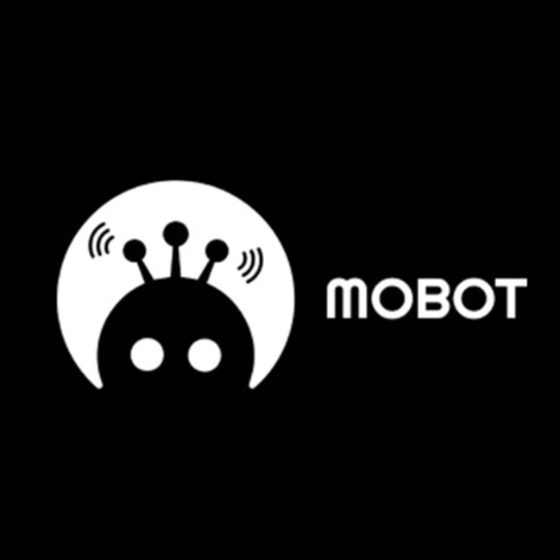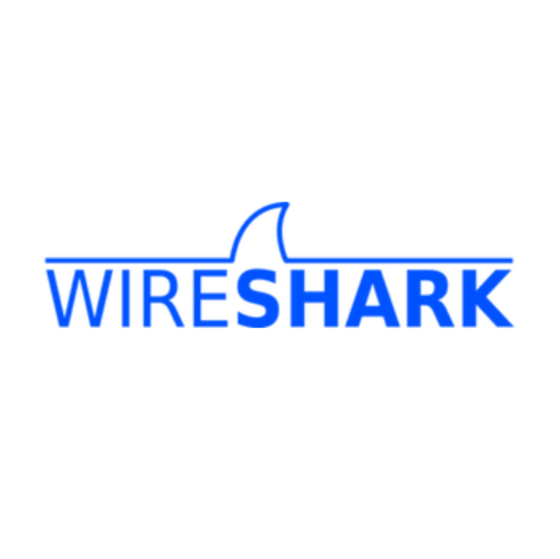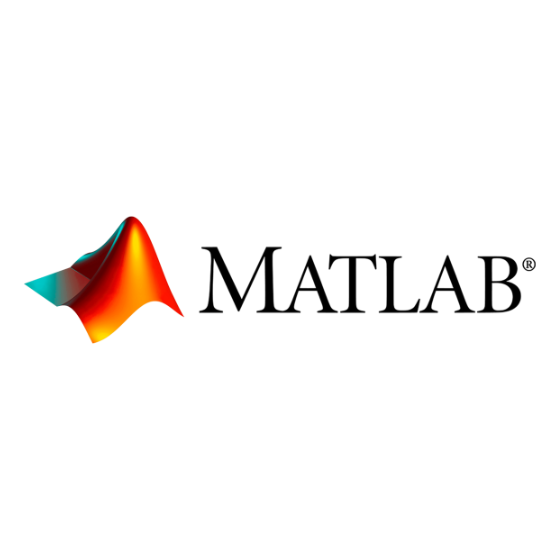Best IoT Testing Tools Shortlist
Here's my pick of the 10 best software from the 19 tools reviewed.
Our one-on-one guidance will help you find the perfect fit.
Testing is crucial for ensuring your devices work as expected. As a tech expert, you know the challenges of integrating multiple devices and systems. IoT testing tools can help you catch errors early and save time.
I've spent countless hours reviewing and testing these tools to bring you the best options. My goal is to give you an unbiased and well-researched review of the top picks.
In this article, you'll find insights into the most effective IoT testing tools available. Whether you're concerned about device compatibility or security, your team needs something.
Why Trust Our Software Reviews
We've been testing and reviewing SaaS development software since 2023. As tech experts ourselves, we know how critical and difficult it is to make the right decision when selecting software. We invest in deep research to help our audience make better software purchasing decisions.
We've tested more than 2,000 tools for different SaaS development use cases and written over 1,000 comprehensive software reviews. Learn how we stay transparent & check out our software review methodology.
Best IoT Testing Tools Summary
This comparison chart summarizes pricing details for my top IoT testing tool selections to help you find the best one for your budget and business needs.
| Tool | Best For | Trial Info | Price | ||
|---|---|---|---|---|---|
| 1 | Best for real-time monitoring | Free trial available | From $15/user/month (billed annually) | Website | |
| 2 | Best for mobile app security | Free trial + free demo available | Pricing upon request | Website | |
| 3 | Intelligent IoT simulation tool for testing and building IoT/MQTT applications | Free 1 year updates + free demo available | From $599/month | Website | |
| 4 | Best for hardware testing | Free trial + free demo available | Pricing upon request | Website | |
| 5 | Best for monitoring at scale | Free trial available | From $3/node/month (billed annually) | Website | |
| 6 | Best for protocol inspection | Not available | Free to use | Website | |
| 7 | Best for data analytics | Free trial available | From $1,015/individual license/year | Website | |
| 8 | Best for compliance checks | Free trial available | Pricing upon request | Website | |
| 9 | Best for network packet analysis | Free to use | Open source project and available for free | Website | |
| 10 | Best for load testing | Not available | Pricing upon request | Website |
-

Docker
Visit WebsiteThis is an aggregated rating for this tool including ratings from Crozdesk users and ratings from other sites.4.6 -

Pulumi
Visit WebsiteThis is an aggregated rating for this tool including ratings from Crozdesk users and ratings from other sites.4.8 -

GitHub Actions
Visit Website
Best IoT Testing Tool Reviews
Below are my detailed summaries of the best IoT testing tools that made it onto my shortlist. My reviews offer a detailed look at the key features, pros & cons, integrations, and ideal use cases of each tool to help you find the best one for you.
Datadog is a cloud-based monitoring tool designed for IT and development teams. It provides infrastructure and application performance monitoring, helping your team maintain system reliability and security.
Why I picked Datadog: Its real-time monitoring capabilities set it apart, making it ideal for dynamic environments. Datadog offers features like log management and security threat detection, which are essential for maintaining system health. The platform supports a variety of integrations, allowing you to monitor your entire tech stack in one place. Its AI observability feature provides insights that help you troubleshoot issues faster.
Standout features & integrations:
Features include network analysis, security monitoring, and application performance tracking. You can easily customize dashboards to suit your monitoring needs. Datadog also offers anomaly detection to alert you to unusual system behavior.
Integrations include AWS, Azure, Google Cloud, Kubernetes, Docker, Slack, PagerDuty, Jira, GitHub, and Zendesk.
Pros and cons
Pros:
- Real-time data visualization
- Customizable dashboards
- AI-driven insights
Cons:
- Can be costly at scale
- Requires technical expertise
Appknox is a mobile app security testing platform designed for businesses in industries like banking, financial services, and government.
Why I picked Appknox: Its focus on mobile app security differentiates it, offering features like static and dynamic application security testing (SAST and DAST). Appknox also provides API testing and manual vulnerability assessments. It integrates well with DevSecOps processes, making it a fit for teams focused on security. The low false positive rate ensures you get accurate results, saving time and effort.
Standout features & integrations:
Features include automated vulnerability assessments, static and dynamic application security testing, and API testing. It also offers manual vulnerability assessments and penetration testing. The detailed reporting system provides insights into vulnerabilities and compliance issues.
Integrations include Jira, Jenkins, GitHub, GitLab, Bitbucket, Slack, Zapier, Azure DevOps, CircleCI, and Bamboo.
Pros and cons
Pros:
- Low false positive rate
- Detailed reporting system
- Quick vulnerability assessments
Cons:
- Pricing not transparent
- Steep learning curve
Intelligent IoT simulation tool for testing and building IoT/MQTT applications
Bevywise IoT Simulator is a tool designed for developers and testers to simulate IoT devices in a controlled environment. It helps your team test and validate IoT solutions before deployment, ensuring system reliability and efficiency.
Why I picked Bevywise IoT Simulator: Device simulation capabilities make it a standout, allowing you to create virtual IoT devices for testing. It offers features like MQTT simulation and load testing, which are crucial for evaluating system performance. You can customize device behaviors and test various scenarios easily. The simulator supports different protocols, providing flexibility for testing diverse systems.
Standout features & integrations:
Features include MQTT simulation, load testing, and customizable device behaviors. The tool supports various communication protocols, which aids in comprehensive testing. You can also simulate multiple devices simultaneously to assess system scalability.
Integrations include AWS IoT, Azure IoT Hub, Google Cloud IoT, IBM Watson IoT, ThingSpeak, HiveMQ, Mosquitto, EMQX, RabbitMQ, and MQTT Broker.
Pros and cons
Pros:
- 24-hour response time
- Easy scenario testing
- Flexible testing environment
Cons:
- Limited user documentation
- Can be complex to set up
Mobot is a testing platform that targets developers and QA teams who need to validate hardware functionality in IoT devices. It automates the testing process, ensuring your devices work as intended before they hit the market.
Why I picked Mobot: Its specialization in hardware testing makes it a unique choice, providing automated test execution for physical devices. Mobot's platform uses robotic systems to simulate human interactions with devices. This approach ensures consistent and accurate testing results. By focusing on hardware, Mobot addresses a niche need in the IoT testing landscape.
Standout features & integrations:
Features include robotic test execution, which automates repetitive tasks and reduces human error. The platform offers detailed test reports to help you identify issues quickly. You can also customize test scenarios to fit your specific hardware requirements.
Integrations include Jira, Slack, GitHub, GitLab, Bitbucket, Trello, Asana, Azure DevOps, Jenkins, and CircleCI.
Pros and cons
Pros:
- Automates repetitive hardware tests
- Reduces human error in testing
- Detailed reporting for quick insights
Cons:
- Limited documentation available
- Can be complex to integrate
Sensu is a monitoring tool designed for IT operations and DevOps teams to track the health of their infrastructure and applications. It helps detect and resolve incidents quickly, ensuring system reliability and performance.
Why I picked Sensu: Its capability to monitor at scale is crucial for large infrastructures. Sensu provides real-time insights into system health, allowing you to address issues before they escalate. The tool's event-driven architecture enables you to automate incident responses. With its flexible configuration, you can tailor monitoring to your specific needs and scale as your infrastructure grows.
Standout features & integrations:
Features include real-time insights into system health, which help you address issues proactively. The event-driven architecture allows for automated incident responses. Sensu also offers a flexible configuration that adapts to your infrastructure's needs.
Integrations include PagerDuty, Slack, Grafana, InfluxDB, AWS CloudWatch, Prometheus, ServiceNow, Jira, Datadog, and Splunk.
Pros and cons
Pros:
- Scales with large infrastructures
- Real-time system health insights
- Event-driven architecture
Cons:
- Can be resource-intensive
- Initial configuration complexity
Wireshark is a network protocol analyzer used by IT professionals and network administrators to capture and examine data packets.
Why I picked Wireshark: Its ability to inspect protocols in detail is invaluable for troubleshooting. Wireshark supports a wide range of protocols and offers advanced filtering options to focus on specific data. The tool's intuitive interface allows you to visualize packet data easily. With its detailed packet analysis, you can quickly identify issues and ensure network stability.
Standout features & integrations:
Features include support for hundreds of protocols, allowing comprehensive network analysis. The tool provides advanced filtering options to help you focus on relevant data. Wireshark also offers a user-friendly interface that makes it easier to navigate through complex packet data.
Integrations include Tcpdump, Snort, Suricata, Bro (Zeek), Nmap, Nagios, Splunk, ELK Stack, Grafana, and Cacti.
Pros and cons
Pros:
- Supports hundreds of protocols
- Advanced filtering capabilities
- User-friendly interface
Cons:
- Limited documentation available
- No built-in alert system
MATLAB is a high-level programming environment used by engineers and scientists for data analysis and visualization. It supports IoT application development by offering tools to analyze and visualize data from connected devices.
Why I picked MATLAB: Its strength in data analytics makes it an asset for IoT projects. MATLAB provides built-in functions for data processing and visualization. You can use its toolboxes to develop algorithms that help in analyzing IoT data. The platform supports integration with hardware, allowing you to test and deploy IoT solutions effectively.
Standout features & integrations:
Features include extensive data visualization capabilities, enabling you to create detailed plots and graphs. The tool offers a wide range of mathematical functions to support complex computations. You can also automate tasks with scripts and functions, enhancing productivity.
Integrations include Simulink, Arduino, Raspberry Pi, ThingSpeak, AWS, Azure, Google Cloud, IBM Watson, OPC Toolbox, and MATLAB Production Server.
Pros and cons
Pros:
- Extensive data visualization capabilities
- Supports complex computations
- Automates tasks with scripts
Cons:
- High technical knowledge required
- Complex licensing options
AWS IoT Device Defender is a security management service tailored for businesses managing IoT devices. It helps monitor and audit device configurations to ensure compliance with security best practices.
Why I picked AWS IoT Device Defender: Its focus on compliance checks makes it ideal for businesses concerned with security standards. The tool continuously audits device configurations against best practices. It provides alerts for any deviations, helping you take corrective actions promptly. The integration with AWS IoT services ensures a seamless workflow for monitoring and managing device security.
Standout features & integrations:
Features include continuous auditing of device configurations and real-time alerts for deviations. It offers detailed security metrics to help you assess your IoT ecosystem's health. The anomaly detection feature identifies unusual behavior, allowing you to address potential threats quickly.
Integrations include AWS Lambda, AWS CloudWatch, AWS IoT Core, AWS S3, AWS SNS, AWS Kinesis, AWS IAM, AWS CloudTrail, AWS Config, and AWS Step Functions.
Pros and cons
Pros:
- Real-time security alerts
- Continuous configuration auditing
- Detailed security metrics
Cons:
- Requires AWS ecosystem familiarity
- Can be complex to configure
Tcpdump is a command-line packet analyzer used by network administrators and security experts to capture and analyze network traffic.
Why I picked Tcpdump: Its focus on network packet analysis provides detailed insights into network traffic. Tcpdump offers powerful filtering capabilities that let you focus on specific data packets. You can capture detailed packet headers to troubleshoot network issues effectively. Its compatibility with various network protocols makes it a versatile tool for network analysis.
Standout features & integrations:
Features include real-time packet capturing, which allows you to monitor traffic as it happens. The tool supports advanced filtering options to help you zero in on specific packets. You can also export packet data for further analysis, which is useful for in-depth troubleshooting.
Integrations include Wireshark, Snort, Suricata, Bro (Zeek), Nmap, Nagios, Splunk, ELK Stack, Grafana, and Cacti.
Pros and cons
Pros:
- Real-time packet capturing
- Advanced filtering options
- Supports various protocols
Cons:
- Requires command-line knowledge
- No graphical user interface
CloudTest helps your team understand how applications perform under stress, ensuring they meet user expectations during peak loads.
Why I picked CloudTest: Its focus on load testing is essential for businesses expecting high traffic. CloudTest allows you to simulate millions of users accessing your application simultaneously. It provides real-time analytics, helping you identify bottlenecks quickly. By using visual test creation, you can design complex test scenarios without coding.
Standout features & integrations:
Features include real-time analytics that gives you immediate insights into performance issues. You can create complex test scenarios using visual test creation tools. CloudTest also supports geo-distributed testing, allowing you to simulate traffic from different locations.
Integrations include Jenkins, GitHub, Jira, Splunk, New Relic, AWS, Azure, Google Cloud, IBM Cloud, and Docker.
Pros and cons
Pros:
- Real-time performance analytics
- Supports geo-distributed testing
- Visual test creation tools
Cons:
- Limited offline support
- Steep learning curve
Other IoT Testing Tools
Here are some additional IoT testing tools options that didn’t make it onto my shortlist, but are still worth checking out:
- Tricentis Testim
For AI-driven test creation
- QA Wolf
For team-based test automation
- Tricentis NeoLoad
For performance testing scalability
- Apache JMeter
For open-source load testing
- Micro Focus LoadRunner
For load testing flexibility
- Shodan
For IoT device discovery
- Entrust
For IoT security compliance
- IoTIFY
For IoT simulation environments
- IBM Watson IoT Platform (IBM Bluemix)
For enterprise IoT solutions
IoT Testing Tool Selection Criteria
When selecting the best IoT testing tools to include in this list, I considered common buyer needs and pain points like device interoperability and security vulnerability detection. I also used the following framework to keep my evaluation structured and fair:
Core Functionality (25% of total score)
To be considered for inclusion in this list, each solution had to fulfill these common use cases:
- Device simulation
- Data packet analysis
- Security vulnerability detection
- Protocol inspection
- Load testing
Additional Standout Features (25% of total score)
To help further narrow down the competition, I also looked for unique features, such as:
- AI-driven insights
- Customizable dashboards
- Real-time monitoring
- Automated test execution
- Anomaly detection
Usability (10% of total score)
To get a sense of the usability of each system, I considered the following:
- Intuitive interface
- Ease of navigation
- Learning curve
- Customization options
- Accessibility features
Onboarding (10% of total score)
To evaluate the onboarding experience for each platform, I considered the following:
- Availability of training videos
- Interactive product tours
- Webinars and live demos
- User documentation
- Chatbot assistance
Customer Support (10% of total score)
To assess each software provider’s customer support services, I considered the following:
- Response time
- Availability of live chat
- Help center resources
- 24/7 support options
- Community forums
Value For Money (10% of total score)
To evaluate the value for money of each platform, I considered the following:
- Pricing transparency
- Cost compared to features
- Flexibility of pricing plans
- Discounts for annual billing
- Free trial availability
Customer Reviews (10% of total score)
To get a sense of overall customer satisfaction, I considered the following when reading customer reviews:
- User satisfaction ratings
- Feedback on customer service
- Comments on ease of use
- Critiques on the feature set
- Reports on reliability and performance
How to Choose IoT Testing Tools
It’s easy to get bogged down in long feature lists and complex pricing structures. To help you stay focused as you work through your unique software selection process, here’s a checklist of factors to keep in mind:
| Factor | What to Consider |
| Scalability | Ensure the tool can grow with your needs. Consider if it can handle increased device connections and data without performance drops. |
| Integrations | Check compatibility with existing systems like AWS or Azure. Seamless integration ensures smoother workflows and data consistency. |
| Customizability | Look for tools that allow you to tailor features to your specific testing needs. Adaptability can boost efficiency in unique environments. |
| Ease of Use | Choose a tool with an intuitive interface. If your team finds it easy to navigate, they'll be more productive and less frustrated. |
| Budget | Evaluate the total cost, including hidden fees. Compare pricing plans to ensure you're getting value for money without overspending. |
| Security Safeguards | Verify the tool's security features. It should offer robust encryption and compliance with standards to protect sensitive data. |
| Support | Consider the level of customer support available. Access to quick, helpful support can save your team time and stress during implementation. |
| Performance Metrics | Assess how the tool measures and reports performance. Accurate metrics are crucial for identifying areas needing improvement. |
Trends in IoT Testing Tools
In my research, I sourced countless product updates, press releases, and release logs from different IoT testing tool vendors. Here are some of the emerging trends I’m keeping an eye on:
- Edge Computing Integration: IoT testing tools are increasingly supporting edge computing. This allows for processing data closer to where it's generated, reducing latency and bandwidth use. Vendors like AWS are integrating edge capabilities to enhance real-time data analysis.
- AI-Driven Testing: AI is being used to enhance testing accuracy and efficiency. By predicting potential issues, AI helps teams preemptively address problems. Tools like Tricentis Testim are incorporating AI for smarter test creation and execution.
- Enhanced Security Features: With growing cybersecurity threats, tools are focusing on advanced security testing. This includes vulnerability scanning and threat detection. Entrust is leading with strong security compliance features.
- Scalability Improvements: As IoT networks grow, tools are enhancing their scalability. This ensures they can handle more devices and data without performance issues. Apache JMeter is expanding its load testing capabilities to support larger networks.
- Real-Time Monitoring: More tools are offering real-time monitoring to provide immediate insights into device performance. This trend helps businesses quickly react to any issues, ensuring continuous operation. IBM Watson IoT Platform is integrating real-time analytics to boost monitoring capabilities.
What Are IoT Testing Tools?
IoT testing tools are software solutions designed to test and validate the performance, security, and functionality of Internet of Things devices. Engineers, developers, and IT professionals typically use these tools to ensure that devices operate correctly and securely. Device simulation, real-time monitoring, and security vulnerability detection features help with identifying issues and optimizing device performance. These insights become even more valuable when paired with robust IoT analytics platforms for deeper data interpretation. Overall, these tools provide essential insights that help maintain the reliability and security of IoT systems.
Features of IoT Testing Tools
When selecting IoT testing tools, keep an eye out for the following key features:
- Device simulation: Allows for testing device interactions in a controlled environment, helping identify potential issues before deployment.
- Real-time monitoring: Provides immediate insights into device performance, enabling quick response to any irregularities.
- Security vulnerability detection: Identifies potential security threats, ensuring devices are protected against cyberattacks.
- Protocol inspection: Analyzes communication protocols to ensure data is transmitted correctly and securely.
- Load testing: Assesses how devices perform under stress, ensuring they can handle high traffic without issues.
- AI-driven insights: Uses artificial intelligence to predict and address potential issues, enhancing testing accuracy.
- Customizable dashboards: Lets users tailor their view to focus on relevant data, improving workflow efficiency.
- Anomaly detection: Alerts users to unusual behavior, helping prevent potential system failures.
- Scalability: Ensures the tool can grow with your network, handling more devices and data as needed.
Benefits of IoT Testing Tools
Implementing IoT testing tools provides several benefits for your team and your business. Here are a few you can look forward to:
- Improved device reliability: By simulating devices and performing load testing, you can ensure devices function correctly under various conditions.
- Enhanced security: Security vulnerability detection helps protect devices from cyber threats, keeping your data safe.
- Faster issue resolution: Real-time monitoring and anomaly detection allow your team to quickly identify and address problems.
- Efficient data analysis: AI-driven insights and customizable dashboards enable more effective data management and decision-making.
- Scalability: These tools can grow with your network, handling increased data and device connections seamlessly.
- Better protocol compliance: Protocol inspection ensures data is transmitted securely and accurately, maintaining system integrity.
- Time savings: Automated test execution reduces manual testing time, allowing your team to focus on other priorities.
Costs and Pricing of IoT Testing Tools
Selecting IoT testing tools requires an understanding of the various pricing models and plans available. Costs vary based on features, team size, add-ons, and more. The table below summarizes common plans, their average prices, and typical features included in IoT testing tools solutions:
Plan Comparison Table for IoT Testing Tools
| Plan Type | Average Price | Common Features |
| Free Plan | $0 | Basic device simulation, limited data analysis, and community support. |
| Personal Plan | $10-$30 /user /month | Device simulation, basic security checks, and email support. |
| Business Plan | $50-$100 /user /month | Advanced monitoring, security vulnerability detection, and customizable dashboards. |
| Enterprise Plan | $250- $500 /user /month | Full scalability, AI-driven insights, dedicated support, and comprehensive analytics. |
IoT Testing Tools FAQs
Here are some answers to common questions about IoT testing tools:
Which types of testing should be performed on an IoT system?
Your IoT system should undergo various tests to ensure reliability and security. Interoperability and compatibility testing are crucial to ensure smooth communication between devices. Security testing is also important to identify vulnerabilities. These tests help maintain a secure and efficient IoT environment.
What are the test cases for IoT testing?
IoT test cases cover device communication, data collection, and security. They are designed based on use cases and business requirements. By simulating potential user scenarios, you can ensure that the system meets its intended performance and security standards.
What is the biggest problem with IoT?
One of the major challenges in IoT is cybersecurity. The expanding attack surface and legacy vulnerabilities pose significant risks. Addressing these challenges requires robust security measures, including proper authentication and network segmentation, to protect your IoT infrastructure.
How are IoT devices tested?
Testing IoT devices involves checking communication strength and data transmission. You need to ensure that devices connect to the network successfully and transmit data accurately. This testing helps confirm that devices function correctly and provide reliable data.
How do IoT testing tools help with security?
IoT testing tools help identify security vulnerabilities in devices and networks. They can simulate attacks to test system defenses and ensure data encryption is effective. By using these tools, you can enhance the overall security posture of your IoT deployment.
Why is scalability important in IoT testing tools?
Scalability ensures that your testing tools can handle the growth of your IoT network. As you add more devices and data, scalable tools maintain performance without degradation. This capability is essential for supporting future expansions and maintaining system reliability.
What's Next?
Boost your SaaS growth and leadership skills. Subscribe to our newsletter for the latest insights from CTOs and aspiring tech leaders. We'll help you scale smarter and lead stronger with guides, resources, and strategies from top experts!
























